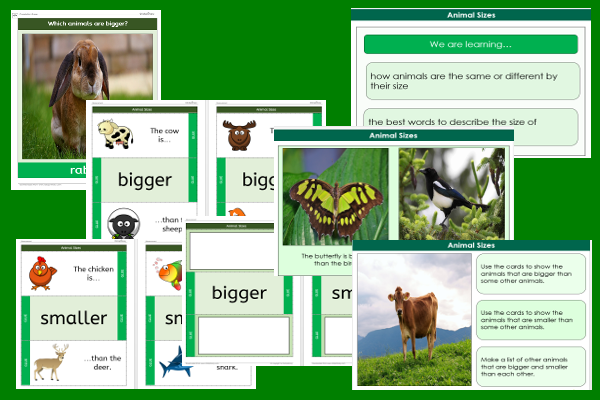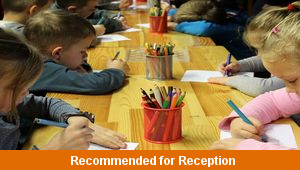Home > Foundation Stage > Numeracy > Measurement > Mass > Animal Masses
Animal Sizes

This numeracy teaching pack for the Foundation Stage gets the children to explore how to identify and match sets of statements to describe and compare the sizes of some different animals that can be found in habitats around the world.
The class can practise using the correct vocabulary words to describe the measurements for the sizes of different animals including the use of bigger and smaller.
Download this teaching pack including display posters, classroom activities and an interactive presentation to explore how to identify and match sets of statements to describe and compare the sizes of some different animals that can be found in habitats around the world
Activities in this teaching pack include sets of cards to match and compare some different animals using the vocabulary words for bigger and smaller and a template to select and record how to make comparisons between the relative sizes of animals that live in different habitats around the world.
The interactive presentation gets the children to explore how to identify and match sets of statements to describe the size of different animals using the words of bigger and smaller.
This lesson is part of a numeracy scheme of work to get the children to practise comparing and recording the masses of some different animals using special vocabulary words for their matching sizes. There are teaching activities for shared learning, differentiated worksheets to support independent learning and interactive presentations to introduce concepts and key skills.
-

Halving Things
Explain and model how to find and record the halves of some of the different objects that can be used at home and in school
-

School Friends
Identify and learn classroom routines and organisation by exploring and describing information and likes and dislikes for each of their classmates
-

Classroom
Identify the location and function of different objects used in the classroom and explore how to formulate rules to manage the classroom safely
-

Shape Patterns
Identify, describe and compare the sequences of geometric shapes that have been used to create a range of different patterns
